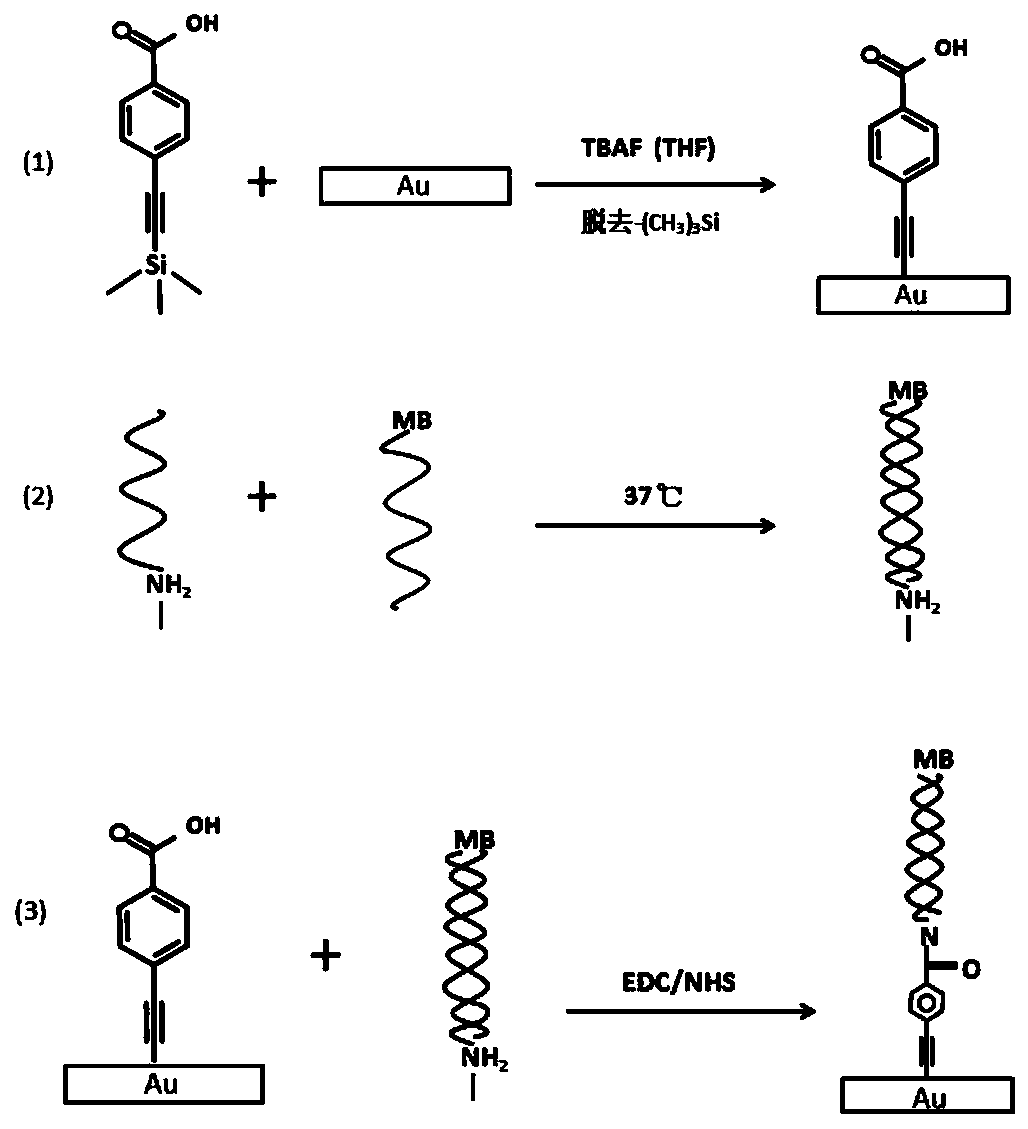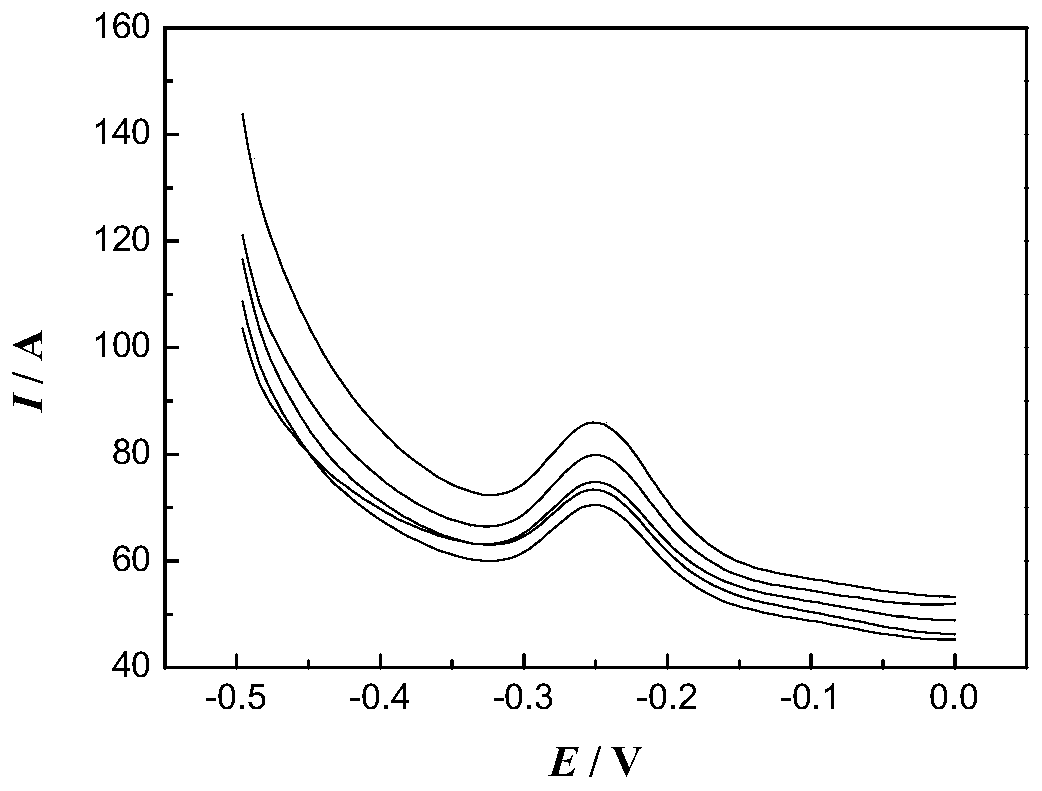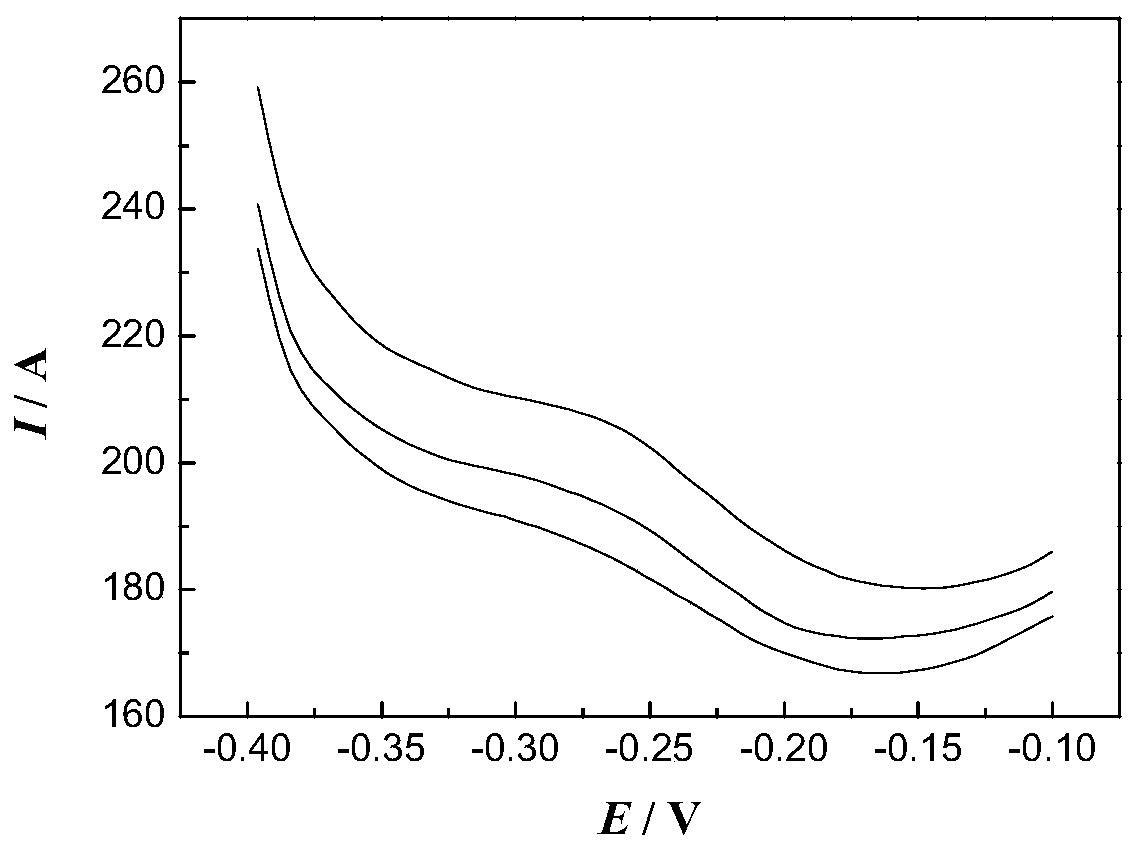A kind of construction method of highly stable nucleic acid sensor
A nucleic acid sensor and construction method technology, applied in the construction of high-stability nucleic acid sensors, and the construction of nucleic acid sensors, can solve problems such as easy shedding and instability, and achieve the effects of good stability, mild conditions and short construction time.
- Summary
- Abstract
- Description
- Claims
- Application Information
AI Technical Summary
Problems solved by technology
Method used
Image
Examples
Embodiment 1
[0034] (1) Fix the Au-C bond on the electrode
[0035] First mix 10 μL of 50 μM 4-[(trimethylsilyl)ethynyl]benzoic acid THF solution with 100 μL of 20 μM tetrabutylammonium fluoride THF solution, take 55 μL into a small centrifuge tube, buckle it upside down on the electrode, Soak the electrode completely in the mixed solution. Place it at room temperature in the dark for 1h to form Au-C bonds.
[0036] (2) Formation of double-stranded DNA (dsDNA)
[0037] Prepare 50 μM DNA1Tris-HCl solution and 10 μM DNA2Tris-HCl solution respectively, mix the two solutions at 37°C, and react for 2 hours. Because the two DNAs are completely complementary, dsDNA can be obtained.
[0038] (3) Connection of dsDNA to electrode surface
[0039] The electrode was rinsed with tetrahydrofuran THF. Mix the dsDNA solution with equal volumes of 100 μM EDC (1-(3-dimethylaminopropyl)-3-ethylcarbodiimide hydrochloride) and 100 μM NHS (N-hydroxysuccinimide) solution, and take in In a small centrifuge t...
PUM
 Login to View More
Login to View More Abstract
Description
Claims
Application Information
 Login to View More
Login to View More - R&D
- Intellectual Property
- Life Sciences
- Materials
- Tech Scout
- Unparalleled Data Quality
- Higher Quality Content
- 60% Fewer Hallucinations
Browse by: Latest US Patents, China's latest patents, Technical Efficacy Thesaurus, Application Domain, Technology Topic, Popular Technical Reports.
© 2025 PatSnap. All rights reserved.Legal|Privacy policy|Modern Slavery Act Transparency Statement|Sitemap|About US| Contact US: help@patsnap.com



